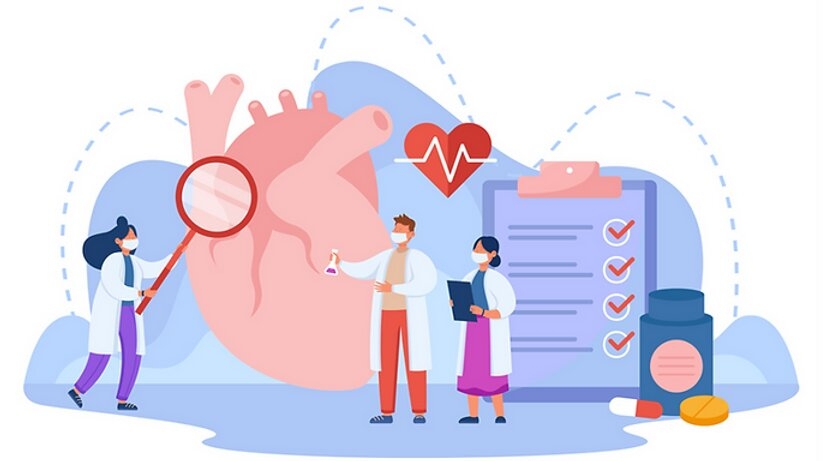What is the role of non-state actors, such as multinational corporations, terrorist organizations, or international NGOs, in shaping modern geopolitical landscapes?
Non-state actors like multinational corporations (MNCs), terrorist organizations, and international NGOs play a crucial role in shaping modern geopolitics by operating outside of traditional government structures.
They challenge the state-centric model of international relations by wielding significant economic, political, and social influence, often blurring the lines between domestic and international affairs.
Their actions can either align with or oppose the interests of sovereign states, leading to both cooperation and conflict.
Multinational Corporations (MNCs)-
MNCs are powerful economic forces that influence geopolitics through their vast resources and global reach. Their primary role is driven by profit, but their operations have significant political consequences.
Economic Leverage and Lobbying: MNCs use their immense financial power to lobby governments, shape trade agreements, and influence regulatory policies in both their home and host countries. Their investment and employment decisions can be critical to a nation's economy, giving them leverage over governments. For example, a corporation might threaten to pull a major factory out of a country to secure favorable tax laws or relaxed labor regulations.
Corporate Diplomacy and Geopolitical Strategy: In an era of increasing geopolitical tension, MNCs engage in their own form of diplomacy, navigating sanctions, trade wars, and political instability. They can act as "diplomatic brokers" between nations or, conversely, become pawns in state-on-state rivalries, with their supply chains and assets used as leverage.
Infrastructure and Technology: Many MNCs control critical global infrastructure, from telecommunications networks to energy pipelines, and dominate key technological sectors like social media and data services. This gives them power to influence information flows, set global standards, and even aid or hinder state security efforts.
Terrorist Organizations-
Terrorist organizations are non-state actors that use violence and fear to achieve political, ideological, or religious goals. Their impact on geopolitics is significant and often destabilizing.
Challenging State Sovereignty: Terrorist groups like Al-Qaeda and ISIS directly challenge the sovereignty of states by operating across borders, controlling territory, and imposing their will on local populations. This forces states to dedicate immense resources to counter-terrorism efforts, domestically and internationally.
Shaping Foreign Policy: Terrorist attacks have been a major driver of foreign policy decisions for decades. The 9/11 attacks, for example, directly led to the US-led "War on Terror," which reshaped international alliances, led to military interventions in the Middle East, and resulted in a massive increase in global security cooperation.
Catalyzing Regional Instability: By exploiting existing ethnic, religious, or political grievances, terrorist groups can exacerbate conflicts, destabilize entire regions, and create humanitarian crises. Their actions can draw external powers into regional conflicts, as seen in Syria and Yemen, complicating peace efforts and fueling proxy wars.
International NGOs-
International Non-Governmental Organizations (INGOs) are often seen as a force for good, advocating for social and environmental causes. Their influence is rooted in their moral authority, expertise, and ability to mobilize public opinion.
Advocacy and Norm-Setting: INGOs like Amnesty International or Greenpeace play a vital role in setting international norms and agendas on issues like human rights, climate change, and humanitarian aid. They can "name and shame" states for their actions, lobbying international bodies and mobilizing public campaigns to pressure governments into changing their policies.
Service Provision and Information Gathering: Many NGOs, such as Doctors Without Borders or the Red Cross, provide essential services in conflict zones and disaster-stricken areas where state capacity is lacking. They also act as important sources of information, providing a ground-level perspective on crises that can challenge or complement official state narratives.
Filling Governance Gaps: In a world with complex transnational problems, NGOs often fill governance gaps left by states. They create networks of experts, civil society groups, and citizens to tackle issues like poverty, public health, and environmental degradation, often working in partnership with, but also holding accountable, governments and international organizations.
Non-state actors like multinational corporations (MNCs), terrorist organizations, and international NGOs play a crucial role in shaping modern geopolitics by operating outside of traditional government structures.
They challenge the state-centric model of international relations by wielding significant economic, political, and social influence, often blurring the lines between domestic and international affairs.
Their actions can either align with or oppose the interests of sovereign states, leading to both cooperation and conflict.
Multinational Corporations (MNCs)-
MNCs are powerful economic forces that influence geopolitics through their vast resources and global reach. Their primary role is driven by profit, but their operations have significant political consequences.
Economic Leverage and Lobbying: MNCs use their immense financial power to lobby governments, shape trade agreements, and influence regulatory policies in both their home and host countries. Their investment and employment decisions can be critical to a nation's economy, giving them leverage over governments. For example, a corporation might threaten to pull a major factory out of a country to secure favorable tax laws or relaxed labor regulations.
Corporate Diplomacy and Geopolitical Strategy: In an era of increasing geopolitical tension, MNCs engage in their own form of diplomacy, navigating sanctions, trade wars, and political instability. They can act as "diplomatic brokers" between nations or, conversely, become pawns in state-on-state rivalries, with their supply chains and assets used as leverage.
Infrastructure and Technology: Many MNCs control critical global infrastructure, from telecommunications networks to energy pipelines, and dominate key technological sectors like social media and data services. This gives them power to influence information flows, set global standards, and even aid or hinder state security efforts.
Terrorist Organizations-
Terrorist organizations are non-state actors that use violence and fear to achieve political, ideological, or religious goals. Their impact on geopolitics is significant and often destabilizing.
Challenging State Sovereignty: Terrorist groups like Al-Qaeda and ISIS directly challenge the sovereignty of states by operating across borders, controlling territory, and imposing their will on local populations. This forces states to dedicate immense resources to counter-terrorism efforts, domestically and internationally.
Shaping Foreign Policy: Terrorist attacks have been a major driver of foreign policy decisions for decades. The 9/11 attacks, for example, directly led to the US-led "War on Terror," which reshaped international alliances, led to military interventions in the Middle East, and resulted in a massive increase in global security cooperation.
Catalyzing Regional Instability: By exploiting existing ethnic, religious, or political grievances, terrorist groups can exacerbate conflicts, destabilize entire regions, and create humanitarian crises. Their actions can draw external powers into regional conflicts, as seen in Syria and Yemen, complicating peace efforts and fueling proxy wars.
International NGOs-
International Non-Governmental Organizations (INGOs) are often seen as a force for good, advocating for social and environmental causes. Their influence is rooted in their moral authority, expertise, and ability to mobilize public opinion.
Advocacy and Norm-Setting: INGOs like Amnesty International or Greenpeace play a vital role in setting international norms and agendas on issues like human rights, climate change, and humanitarian aid. They can "name and shame" states for their actions, lobbying international bodies and mobilizing public campaigns to pressure governments into changing their policies.
Service Provision and Information Gathering: Many NGOs, such as Doctors Without Borders or the Red Cross, provide essential services in conflict zones and disaster-stricken areas where state capacity is lacking. They also act as important sources of information, providing a ground-level perspective on crises that can challenge or complement official state narratives.
Filling Governance Gaps: In a world with complex transnational problems, NGOs often fill governance gaps left by states. They create networks of experts, civil society groups, and citizens to tackle issues like poverty, public health, and environmental degradation, often working in partnership with, but also holding accountable, governments and international organizations.
What is the role of non-state actors, such as multinational corporations, terrorist organizations, or international NGOs, in shaping modern geopolitical landscapes?
Non-state actors like multinational corporations (MNCs), terrorist organizations, and international NGOs play a crucial role in shaping modern geopolitics by operating outside of traditional government structures.
They challenge the state-centric model of international relations by wielding significant economic, political, and social influence, often blurring the lines between domestic and international affairs.
Their actions can either align with or oppose the interests of sovereign states, leading to both cooperation and conflict.
Multinational Corporations (MNCs)-
MNCs are powerful economic forces that influence geopolitics through their vast resources and global reach. Their primary role is driven by profit, but their operations have significant political consequences.
Economic Leverage and Lobbying: MNCs use their immense financial power to lobby governments, shape trade agreements, and influence regulatory policies in both their home and host countries. Their investment and employment decisions can be critical to a nation's economy, giving them leverage over governments. For example, a corporation might threaten to pull a major factory out of a country to secure favorable tax laws or relaxed labor regulations.
Corporate Diplomacy and Geopolitical Strategy: In an era of increasing geopolitical tension, MNCs engage in their own form of diplomacy, navigating sanctions, trade wars, and political instability. They can act as "diplomatic brokers" between nations or, conversely, become pawns in state-on-state rivalries, with their supply chains and assets used as leverage.
Infrastructure and Technology: Many MNCs control critical global infrastructure, from telecommunications networks to energy pipelines, and dominate key technological sectors like social media and data services. This gives them power to influence information flows, set global standards, and even aid or hinder state security efforts.
Terrorist Organizations-
Terrorist organizations are non-state actors that use violence and fear to achieve political, ideological, or religious goals. Their impact on geopolitics is significant and often destabilizing.
Challenging State Sovereignty: Terrorist groups like Al-Qaeda and ISIS directly challenge the sovereignty of states by operating across borders, controlling territory, and imposing their will on local populations. This forces states to dedicate immense resources to counter-terrorism efforts, domestically and internationally.
Shaping Foreign Policy: Terrorist attacks have been a major driver of foreign policy decisions for decades. The 9/11 attacks, for example, directly led to the US-led "War on Terror," which reshaped international alliances, led to military interventions in the Middle East, and resulted in a massive increase in global security cooperation.
Catalyzing Regional Instability: By exploiting existing ethnic, religious, or political grievances, terrorist groups can exacerbate conflicts, destabilize entire regions, and create humanitarian crises. Their actions can draw external powers into regional conflicts, as seen in Syria and Yemen, complicating peace efforts and fueling proxy wars.
International NGOs-
International Non-Governmental Organizations (INGOs) are often seen as a force for good, advocating for social and environmental causes. Their influence is rooted in their moral authority, expertise, and ability to mobilize public opinion.
Advocacy and Norm-Setting: INGOs like Amnesty International or Greenpeace play a vital role in setting international norms and agendas on issues like human rights, climate change, and humanitarian aid. They can "name and shame" states for their actions, lobbying international bodies and mobilizing public campaigns to pressure governments into changing their policies.
Service Provision and Information Gathering: Many NGOs, such as Doctors Without Borders or the Red Cross, provide essential services in conflict zones and disaster-stricken areas where state capacity is lacking. They also act as important sources of information, providing a ground-level perspective on crises that can challenge or complement official state narratives.
Filling Governance Gaps: In a world with complex transnational problems, NGOs often fill governance gaps left by states. They create networks of experts, civil society groups, and citizens to tackle issues like poverty, public health, and environmental degradation, often working in partnership with, but also holding accountable, governments and international organizations.
0 Reacties
0 aandelen
2K Views
0 voorbeeld








